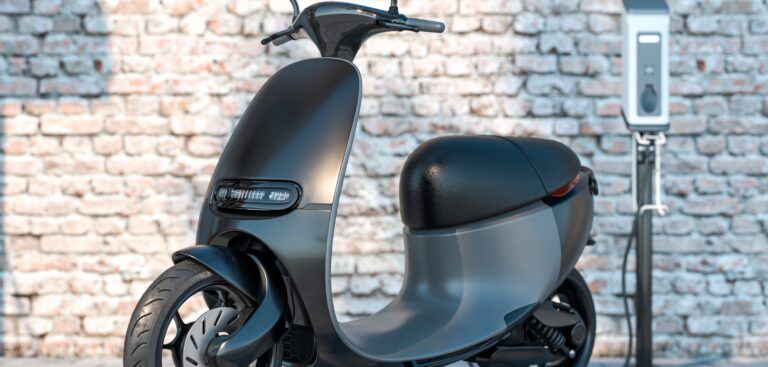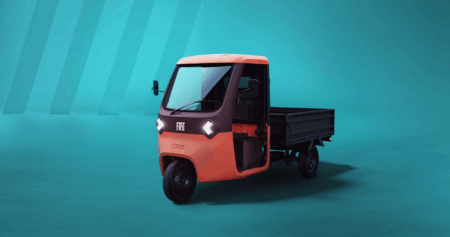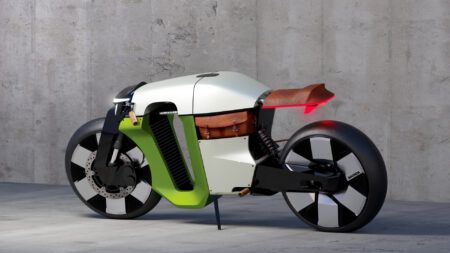Growing concerns about global warming and society’s ecological impact have meant that there is greater urgency to move away from the use of traditional internal combustion engines in vehicles, and rely instead on more environmentally friendly alternatives.
Electric vehicles of various forms are starting to be seen more regularly on our roads, and are used by an increasing proportion of commuters around the world. Their uptake is being further promoted by several important political developments – with governments making major investments to give people greater access to charging infrastructure, as well as offering attractive financial incentives to electric vehicle buyers.
E-scooters could have a major role to play in countries’ future electro-mobility policies. Already commonplace in the densely populated cities of the Far East, they are helping to tackle the severe air-pollution problems seen there – providing an effective means of personal transport, but without leading to heavy carbon emissions. However, their initial production is associated with a significant carbon footprint.
Full-scale migration from petrol-driven cars to e-scooters would not only help reduce air pollution. It could also relieve congestion problems, as these vehicles take up less space on the road and can maneuver through tight gaps. They are also less of a problem in terms of parking, requiring a far smaller area.
Following the example set by the likes of China, Taiwan and Vietnam, European commuters are now starting to show an interest in the use of e-scooters. Market analysis recently carried out by Grand View Research suggests that total global shipments of e-scooters will equate to annual revenues of approximately $42 billion by the year 2030. That represents an 8.5% compound annual growth rate (CAGR) between now and then. Though Asia will still have the largest share of this market, Western economies will see the sharpest upturn in growth. Helping to encourage e-scooter adoption here in Europe, Amsterdam’s municipality recently announced that it will ban all petrol-driven mopeds from its city-center cycle routes. Similar legislative measures are likely to follow in other cities with acute traffic and pollution problems.
Most e-scooter models have an output power of between 8 kW and 12 kW. They take their power from a Li-ion battery, then use it to drive an electric motor. The charging efficiency of this battery is an important factor. It will be more attractive to the customer if charging is quick and convenient. Therefore e-scooter manufacturers recognize the charging aspect as an area where considerable product differentiation can be exerted. In addition, e-scooters have an advantage over electric cars, as they do not necessarily require dedicated charging equipment. Models are now being introduced where the chargers are detachable. This means they can be taken into the home or office for charging via a conventional mains power outlet.
On average an e-scooter should be able to travel 45 to 55 km between recharges, though some models allow the storage of additional power packs, meaning this figure could be more than trebled. This should mitigate the concerns of many electric vehicle users that they will run out of electric power before getting to a place where they can recharge the battery – a phenomenon known as ‘range anxiety’.
The charging hardware needs to be both lightweight and have a small form factor, so that it does not denigrate either the sleekness of the e-scooter’s design or the distance it can travel before the battery needs replenishing – the greater the overall weight of the vehicle, the shorter its range. Likewise, the hardware must be affordable, since this is a highly competitive sector where the price tag will be key to the vehicle’s commercial success – not just in making customers pick that particular e-scooter, but also in steering them away from buying a conventional petrol-driven scooter.
Robust construction will also be a high priority, as these vehicles will need to keep running for several years, and cope with adverse weather conditions and rough treatment. Though the e-scooter’s capacity to cover an extensive range between battery recharges is paramount, that doesn’t mean any compromises can be made in respect to performance – e-scooter models must still possess substantial torque, with top speeds of 80 to 90 km/hr possible, plus the ability to carry reasonably heavy loads.
Vehicle manufacturers therefore need to be able to source powertrain hardware that combines a diverse array of attributes. It should be inherently compact (making it easier to integrate), have elevated operational parameters (with somewhere in the region of 92 to 95% efficiency levels expected), support an extensive working lifespan and also be cost-effective.
With regard to ruggedness, this hardware will need to cope with temperatures from up to 85°C all the way down to -40°C, as well as exhibiting ongoing resilience to the effects of both shock and vibration. It should be IP67 rated, to protect against water ingress.
Immunity from voltage transients and surges will be important too, as these are endemic with ‘dirty’ 48 V power rails (with the input voltage varying from 35 V to 60 V at any point in time). Effective over-temperature, over-current and over-voltage protection mechanisms are also mandatory. Thermal management must be performed using conduction and convection, as fan cooling is not practical in this sort of application. That means superior heatsinking must be incorporated into the power system. Electro-magnetic interference (EMI) will also need to be taken into account.
A high-efficiency DC-DC converter will be required for power delivery, taking the 48 VDC supply from the battery source and delivering a 12 VDC output to power the onboard e-scooter controls such as lights, ECU, sensors, horn etc. This will stay permanently inside the scooter. It may, in some models that are now emerging, be complemented by an additional AC-DC charger, which can be removed and then connected to the mains supply indoors for greater user convenience.
In cases where an AC-DC charger is included, for example for powering up in the home, then human wellbeing will have to be considered, as the charger should no longer be thought of as simply being part of a vehicle – in essence it becomes a domestic device. It will need safety compliance certification, and this can be a time-consuming and laborious process. So that the motive power pack can be removed (for remote charging purposes), a small auxiliary battery will be required to maintain power to the system control electronics.
Drawing on extensive prior experience in helping manufacturers across the globe with the development and subsequent certification of its e-scooter models, Murata is recognized as a valued technology partner in this sector. The company is currently involved in e-scooter projects with several leading European-based OEMs, and innovative new models are due to be introduced in the near future.
Murata’s engineering team can work in close collaboration with OEMs to supply them with fully optimized, high power-density solutions that exactly match their specific cost, performance and reliability criteria. This can be done by making use of off-the-shelf power modules, or alternatively through the application of customized/semi-customized hardware.





